
Spanish main

El Cid
Spanish Explorers
Class Policy
Homework
Grammar
Spanish Programs
Spanish 1 Quizzes
Spanish 2 Quizzes
Software

French main

Grammar
Charlemagne
Louis XIV
Napoleon
Joan of Arc
Class Policy
Homework
Quizzes
Programs

Biology main

Class Policy
Homework
Quizzes
Programs

Chemistry Links
Quizzes
Software

Physics Links
Quiz Links
Software

Earth Science

Astronomy

Science
Proficiency Links

|










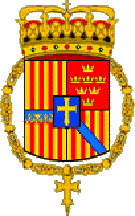

  



Born in 1451, Isabella was queen of Castile from 1474 to 1505. Her marriage to Ferdinand II of Aragon led to the unification Spain. Ferdinand and Isabella succeeded as joint sovereigns to the throne of Castile on the death of Isabella's half brother Henry IV in December of 1474. From 1481 the "Catholic Kings," as Ferdinand and Isabella were known, ruled both kingdoms jointly, but it was a union of crowns not countries. The two kingdoms maintained their separate laws, institutions and governments. In 1478, they obtained a papal bull establishing the Spanish Inquisition as a royal council under royal control. The Inquisition persuaded the Catholic Kings to expel the Jews in 1492. The expulsion of the Jews was not only cruel but also economically disastrous for Spain. Isabella deprived Spain of its economically most active citizens and laid it open to exploitation by German and Italian financiers. The Catholic Kings had given monarchy in Castile a completely new basis of power and laid the foundations of Spain's political greatness in the 16th century. It was typical of Isabella's political vision that she agreed to finance the expedition of Christopher Columbus. Isabella had five children: Isabel, John, Joan, Maria, and Catherine.
The above information is quoted from: http://www.kings.edu/womens_history/isabel.html King's College, Wilkes-Barre, Pennsylvania.


Ferdinand V was called Ferdinand The Catholic (1452-1516). He was King of Castile (1474-1504). He was also known as Ferdinand II , King of Sicily (1468-1516) and of Aragón (1479-1516); as Ferdinand III, King of Naples (1504-1516). He was the son of King John II of Aragón.


The Genealogies of
Ferdinand and Isabella

Ferdinand II of Aragón
(aka Ferdinand V)
-Ferdinand's genealogy Visit my page on Ferdinand's genealogy
Isabella I of Castile
-Isabella's genealogy Visit my page on Isabella's genealogy
Genealogy of the royal family of Spain
Go to: www.geocities.com/henrivanoene/genspain.html

  



Ferdinand II of Aragón
-Ferdinand II Information is from The Columbia Encyclopedia, Sixth Edition. 2001.
-Ferdinand II Information is from www.infoplease.com/ce5/CE018151.html
-Ferdinand II Information is from www.factmonster.com/ce5/CE018151.html
-Ferdinand II Information is from gallery.euroweb.hu/tours/spain/ferdina2.html
-Ferdinand II Information is from www.newgenevacenter.org/movers/renaiss-reform.htm
Isabella I of Castile
-Isabella I Information is from www.newadvent.org
-Isabella I Information is from www.acs.ucalgary.ca
-Isabella I Information is from Bill Gilbert, teacher at University of Kansas, www.ku.edu
-Isabella I Information is from The Columbia Encyclopedia, Sixth Edition. 2001.

  

The Descendents and Family of
Ferdinand and Isabella

-Catherine of Aragón Ferdinand and Isabella’s youngest daughter, born Dec. 15, 1485, was Catherine of Aragón. Catherine was the first of the six wives of King Henry VIII of England.Information is from www.who2.com.
-Catherine of Aragón Information is from englishhistory.net.
-Catherine of Aragón Queen Catherine bore six children, only one of whom survived, Mary, who would later become Queen Mary I of England. Information is from www.kings.edu.

Mary I
Mary I married Phillip II of Spain.

Phillip II
-Catherine of Aragón Catherine’s nephew was Charles V, son of her sister, Juana la loca. Information is from tudorhistory.org, King’s College, Wilkes-Barre, Pa.
-Juana la loca Juana was born in 1479. Information is from The Columbia Encyclopedia, Sixth Edition. 2001.
-Philip I Juana la loca married Philip the Handsome in 1496. Information is from The Columbia Encyclopedia, Sixth Edition. 2001.

Charles V
-Charles V Charles V, son of Juana la loca
1500–1558, Holy Roman Emperor (1519–58), also known as Charles I, King of Spain (1516–56); son of Philip I and Juana (Joanna) of Castile; grandson of Ferdinand II of Aragón and Isabella I of Castile, Holy Roman Emperor Maximilian I and Mary of Burgundy. Information is from The Columbia Encyclopedia, Sixth Edition. 2001.
-Charles V Genealogy Visit my page on the genealogy of Charles V.

  

Moorish Spain

Spain under the Moors from http://www.sonhex.dk/under.htm
History of Spanish Moors, Part 1 from www.spanish-fiestas.com/andalucia/history-moorish-spain.htm
History of Spanish Moors, Part 2 from www.spanish-fiestas.com/andalucia/history-moorish-spain2.htm
History of Spanish Moors, Part 3 from www.spanish-fiestas.com/andalucia/history-moorish-spain3.htm
The Genealogy of the Nasrid Kings of Granada 1232 - 1492
-Web Resources on Moorish Spain
from Liziel Zapata of CalPoly at San Luis Obispo
-History of Spain Index
from Liziel Zapata of CalPoly at San Luis Obispo
The following maps are originally from: http://ccat.sas.upenn.edu/~rs143/map.html.
They are reproduced by Liziel Zapata of CalPoly at San Luis Obispo.

MAPS
-711-844 A.D.
-844-1035 A.D.
-1035-1139 A.D.
-1035-1139 A.D.

Banner of Castile and Leon

The Reconquest of Spain in the 13th and 14th centuries
MAPS
-1135-1331 A.D.
-1343-1402 A.D.
-1402-1479 A.D.
-1479-1492 A.D.

  
 Connections to
Connections to
Ferdinand and Isabella

Christopher Columbus
1451 (?) – 1506


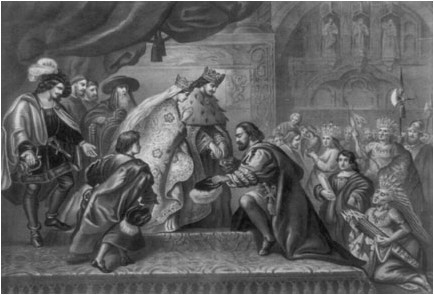
Christopher Columbus meets with King Ferdinand and Queen Isabella.


Replicas of the Pinta and Santa Maria, built for the 1992 quincentennial.
Note the tiny topsail on Santa Maria.
Pictures and information about his ships are from:
http://www1.minn.net/~keithp/ships.htm
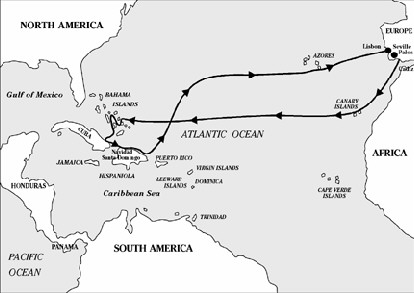
Columbus' first voyage, 1492 to 1493
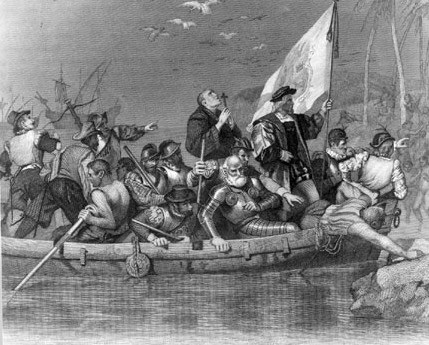
Columbus arrives in the New World.
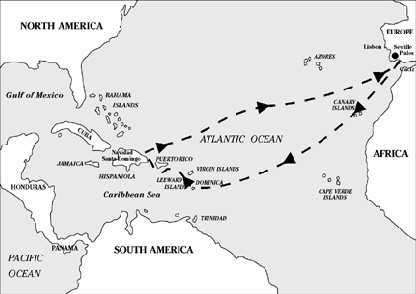
Columbus' second voyage, 1493 to 1496
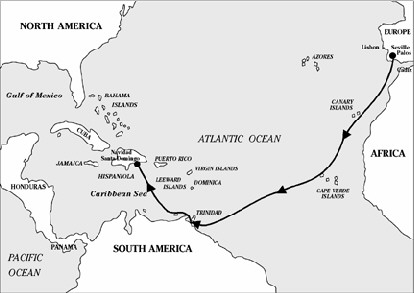
Columbus' third voyage 1498
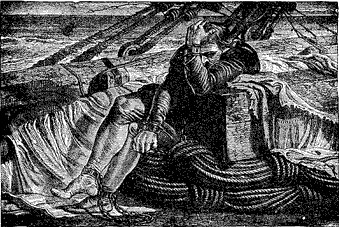
Columbus is sent back to Spain in chains in 1500.
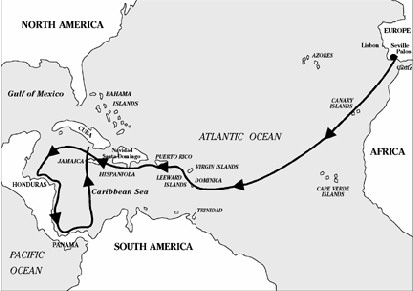
Columbus' fourth voyage 1502 to 1504

-Christopher Columbus Information is from The Columbia Encyclopedia, Sixth Edition. 2001.
-The Columbus Navigation Homepage Examining the History, Navigation, and Landfall of Christopher Columbus website by Keith A. Pickering who has been researching Columbus and his voyages since 1991, and has during that time authored two papers on Columbus's navigation that have appeared in scholarly journals. He has also given a number of lectures on Columbus's navigation and the log of his first voyage to the Society for the History of Discoveries, of which he is also a member. Currently, he is in the early stages of writing a book on the Landfall problem, and has been a consultant to National Geographic on an upcoming map of exploration and discovery.
-Christopher Columbus: Extracts from Journal This text is part of the Internet Medieval Source Book. The Sourcebook is a collection of public domain and copy-permitted texts related to medieval and Byzantine history.
This website is by Paul Halsall of Fordham University, New York City's Jesuit University. He is the ORB, Online Reference Book for Medieval Studies, sources editor. The Internet Medieval Sourcebook is located at the
Fordham University Center for Medieval Studies. Click here http://www.fordham.edu/mvst/ to access this site.
-Christopher Columbus and the Spanish Empire This tutorial is from The Applied History Research Group of the University of Calgary, Calgary, Alberta, Canada.
-A Letter from Christopher Columbus to the
King & Queen of Spain, 1490's Information is from The University of Oklahoma Law Center in Norman, OK.
-The Story of Columbus The True Story of Christopher Columbus, Called the Great Admiral by Brooks, Elbridge Streeter, 1846-1902, from The Electronic Text Center, University of Virginia Library.
-Privileges and Prerogatives Granted by Their Catholic Majesties to Christopher Columbus: 1492. Read what their majesties Queen Isabella and King Ferdinand granted Columbus, from The Avalon Project at Yale Law School.
-The Columbus Letter Christopher Columbus's letter announcing the success of his voyage to the "islands of the India sea" is one of the most remarkable documents ever published. It is a key document in the social and intellectual histories of both Europe and the Americas. From The Osher Map Library and Smith Center for Cartographic Education, University of Southern Maine. A literal translation of the Latin text of the Basel 1494 edition into English.

The Spanish Inquisition



-The Inquisition From The Age of Torquemada by John Edward Longhurst, Casa Vieja, Sandoval, New Mexico
Coronado Press 1962 presented by The University of Kansas,
Lawrence, Kansas. The table of contents for the book is found at http://www.ku.edu/carrie/texts/carrie_books/longhurst2/00toc.html.
-The Spanish Inquisition The Spanish Inquisition was independent of the medieval Inquisition. It was established (1478) by Ferdinand and Isabella with the reluctant approval of Sixtus IV. Information is from The Columbia Encyclopedia, Sixth Edition. 2001.
-The Medieval Inquisition Information is from www.acs.ucalgary.ca
-Tomás de Torquemada One of the first and most notorious heads of the Spanish Inquisition was Tomás de Torquemada. He was largely instrumental in bringing about the expulsion of the Jews in 1492…Torquemada owes his reputation for cruelty to the harsh rules of procedure that he devised for the Inquisition and to the rigor with which he had them enforced. Information is from The Columbia Encyclopedia, Sixth Edition. 2001.
-
Frequently Asked Questions about the Inquisition
James Hannam completed a Masters in Historical Research at Birkbeck College, University of London and has started a PhD in History of Science at Pembroke College, Cambridge.

  

THE SPANISH LANGUAGE
& SPANISH-SPEAKING COUNTRIES
Use this  button to access information about button to access information about
Spain, Hispanic countries, their peoples, history, culture, etc.



|
|





|
 Classroom
Classroom









































































 button to access information about
button to access information about 






